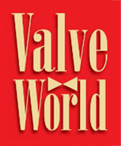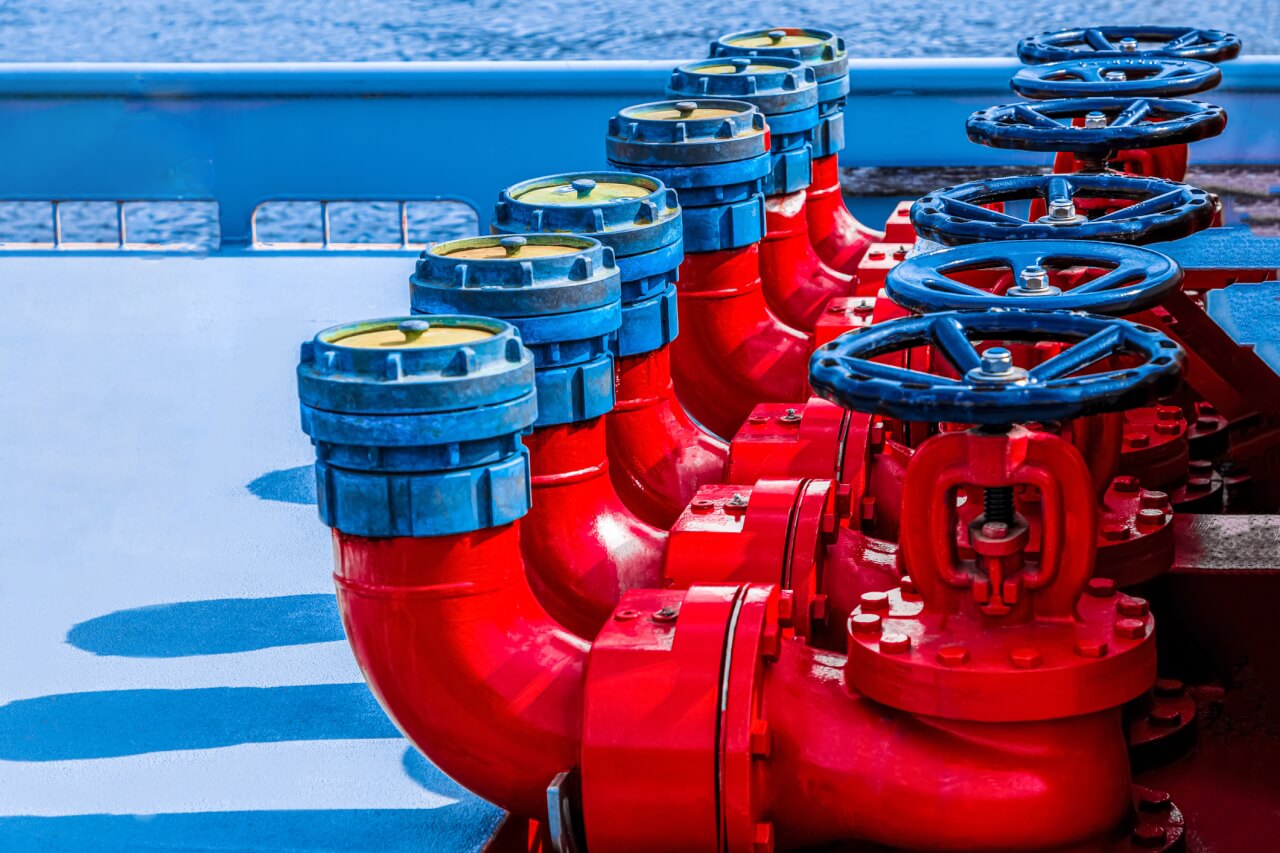The number and scope of valves required for ships is much wider than might first be imagined. With applications including fuel lines, steam lines, fire-fighting systems, drinking water, sewage water, bilge control, ballast systems, cargo loading & unloading and compressed air to name just a few, merchant and naval vessels are home to a wide array of gate, globe, check, ball, butterfly and pressure relief valves. In short, plenty to keep on-board technicians busy, especially if prompt solutions are required when the vessel is at sea.
By KCI Editorial
Market expectations
The global shipping sector is currently in the ascendency, leading to many orders for extra vessels – and valves of course. For example, in their February 2025 report, Market Research Intellecti value the 2024 global marine actuator and valve market at USD 9.42 billion and project growth to reach USD 20.53 billion by 2031, reflecting a CAGR of 13.86%. They ascribe this strong figure to increasing demand, technological advancements, and a focus on sustainability.
Their optimism seems backed up by data from India, amongst others, where the shipbuilding industry is experiencing an unprecedented boom, having surged from USD 90 million in 2022 to USD 1.12 billion in 2024.
These figures are for merchant shipping only, such as passenger ships, cruise liners, cargo vessels, rankers, special purpose vessels, service vessels, fishing vessels, etc. However, incidental data available for the naval sector indicates a similarly positive outlook. Hence early this year, a press release from Hunt Valve in the USA indicated that the company had been awarded major purchase orders (totalling USD 96 million) for essential valves for the Virginia and Columbia-Class submarine programs. The scope includes ship service ball valves and forged high-pressure system valves.
Meanwhile in Europe, W&O Supply released details about a framework agreement with Damen Naval to supply valves, filters and instrumentation for the construction of the German Navy’s multi-purpose combat vessel. The four F126 frigates are being built by Damen Naval at shipyards in Hamburg, Kiel and Wolgast. Interestingly, in addition to ensuring compliance with valve standards, W&O Europe will if necessary take care of shock and vibration testing.
Valve types
Be it merchant or naval shipping, a wide range of valve types can be found on boats of all shapes and sizes. For example, gate valves are commonly found in on/off services in ballast and fuel oil systems, where minimal pressure drop is a concern. Meanwhile, globe valves are a standard selection for temperature control systems and steam lines due to their ability to manage flow precisely. Ball valves are also used widely on board, such as in fuel and water services. Check valves are commonly utilized in bilge pumping systems and for that matter in any on-board application where reverse flow must be prevented. Butterfly valves are found in HVAC systems, seawater intake and ballast systems, especially for larger diameter piping due to their compact sizes. Pressure relief valves can be found in boiler systems, fuel oil systems and pressure vessels – i.e., wherever overpressure could be a concern. And even the humble solenoid valve is also present in increasingly large numbers, such as in automated systems such as ballast control and machinery cooling systems.
The marine world uses additional valve categories which may sound unfamiliar in process circles. Storm valves (sometimes called scupper valves) are for example a specific type of swing-check valve and often fitted with a counterweight. Installed to shipside sewage system outlets, they enable sewage to be discharged overboard whilst ensuring that in the event conditions suddenly change, sewage and/or seawater cannot backflow into the sewage system. Storm valves normally have a handwheel, enabling crew to firmly lock the valves in the closed position should the need arise. Some applications too are specific to ships. Consider for example the bilge and ballast systems. Ballast control refers to the (partial) filling or emptying of specific tanks during the process of loading or unloading cargo in order to maintain ship’s stability. The bilge refers to the lowest part of a ship, where excess water accumulates. A system of valves and pumps is used to remove all such water, to maintain the vessel’s integrity.
Valve issues
No surprises to learn that valves installed on ships can suffer the same issues as those on land, such as internal and external corrosion, wear and tear of gaskets and packings, blockages, etc. However, the unique environment on board ships calls for extra attention to detail. Hence external corrosion is an area that receives more attention on valves destined for marine applications.
Materials and/or protective coatings are chosen that provide suitable corrosion-resistance to seawater. In some instances, cathodic protection may also be used to mitigate corrosion in submerged valves. Regular inspection of the installed valve base remains the name of the game.
Most manufacturers therefore offer ship’s valves in a wide range of materials, including stainless steel, steel, brass, PVC, CPVC, PVDF, etc. More exotic materials are also available. Stra-Val for one has a range of sea-water valves (up to 3”) available in titanium, Hastelloy, Monel and Alloy 20. Similarly, leakage and failure of gaskets, packings and seals can also be an issue on board ships, with problems exacerbated by the extra vibration associated with vessels. Moreover, the often confined spaces and lack of proper access to valves can also contribute to improper installation of replacement parts.
Pipes and valves on ships are also more prone to ‘foreign object deposits’ than equivalent systems on land. For this reason, strainers and filters are often fitted upstream of critical valves, with regular flushing of pipelines also recommended. Not surprisingly, technician training courses for the marine sector consistently emphasise the need for regular checks of items such as valves. They also discuss maintenance and repair procedures which may be less familiar to those onshore. In an emergency situation, for example, a temporary solution for leaking pipes and valves can be the use of a ‘cement box’. This relies on fast-setting cement which is poured into an improvised wooden box around the failed component. The solution may sound crude but can enable the vessel to continue its journey until proper repairs can be effected at port.
Addressing project challenges
In a recent online article, Dante Valve provided valve procurement strategies for shipyards, enabling them to better meet strict project deadlines and avoid budget overruns. Summarized, these include:
- Build strong, strategic partnerships with valve manufacturers and distributors to ensure access to a consistent supply of high-quality valves
- Close ties enables you to set up priority ordering, stockpiling, or long-term bulk purchasing agreements that reduce your lead times
- If you require custom valve solutions, evaluate your supplier’s rapid prototyping capabilities, turnaround times, and responsiveness
- If mission-critical valves fail during a project, consider if a repair service would be cheaper and/or faster than ordering a new valve
Marine valve research
Interested in taking a deeper dive into the latest research into marine valves? Then the following articles might be of interest: Study on sealing performance of main gate valve of marine nuclear power plant based on fluid-solid-thermal coupling method, by Chen Yuqing, Yu Hang, Fu Shengwei and Li Ang. https://www.frontiersin.org/journals/energy-research/articles/10.3389/fenrg.2024.1375806/full
The sealing performance and failure analysis of marine valve packing seal structures based on dimensionless function definition, by Xinkai Ding, Lintao Wang, Jingrun Cai, Zihan Wang, Zhexin Zhang, and Xiyuan Fan. https://www.sciencedirect.com/science/article/abs/pii/S0029801824032773
Raising the safety bar
To ensure ships’ integrity, and improve safety for passengers and crew, several bodies worldwide investigate accidents, identify root causes, and recommend improvements in system designs as well as operational procedures. A quick search reveals that valve-related incidents can certainly be found among the list of accidents, although typically the problems are not due to the valves per se. For example, a report by Marine Insightii discusses how a tanker carrying MTBE (methyl tertiary butyl ether) suffered a cargo overflow though a drop valve on a cargo tank.
Apparently, the ship’s practice was to tie up the manual drop valves with rope to indicate they were in the closed position. In a chain of errors, not only was a specific valve in fact not properly closed, but an officer failed to correctly identify a subsequent audible alarm. Moreover, multiple valves were opened up which were not required plus there was a failure to physically check the status of the valves. Needless to say that corrective actions have been taken.
A second incident with a valve dimension involves a vessel named the ‘Joanne Marie’, which was found partially sunk after having being moored and deactivated at a shipyard in the USA. The cause was discovered to be an obstructed check valve on a bilge pump discharge line. Apparently a wire nut had become lodged in the spring-loaded check valve. That alone would not have led to the sinking, had the shutoff valve located before the through-hull pipe not been left open.
Procedures have since been modified to prevent such incidents in the future.
Naval valves
When it comes to valves for naval vessels, top quality and performance are of course more important than ever. Hence IMI Process Automation refers to ‘custom-designed valves [that] are engineered to withstand diverse water conditions, ensuring long-lasting durability and optimal functionality. Each valve is meticulously tested and certified to industry standards, guaranteeing their reliability and adherence to stringent quality benchmarks’.
Meanwhile, Shipham Valves indicates that ‘material selection becomes critical in the supply of the most cost-effective through-life solution. Our products are manufactured in various specialist materials including nickel aluminium bronze, bronze, duplex stainless steel, super duplex stainless steel, Hastelloy®, Monel®, titanium, Inconel® and zirconium in sizes ranging from ∞ to 48 inches’.
Increasing sophistication
Many observers suggest that the marine industry as a whole is poised for transformation, in step with changes in other industries. Hence as ships become increasingly complex, so the demand for more automated and sophisticated control systems will grow. Remote monitoring will also be more widely deployed on board, in line with the trend to invest in smart systems. Other drivers that could lead to investment in more sophisticated valve systems include the enhanced focus on safety and compliance, the drive for sustainable solutions, and advancements in cybersecurity.
 Colour coding of marine valves
Colour coding of marine valves
To enable the fast identification of pipeline media, pipes and valves on ships are normally given a colour-code. Some examples are:
• Green = sea water
• Blue = fresh water
• Yellow = lube oil
• Silver = steam
• Grey = non-flammable gases
• Brown = fuel oil
• Red = fire line
• Violet = acids and alkalis
• Yellow = inflammable gases
• Black = waste matter
About this Technical Story
This Technical Story is an article from our Valve World Magazine, June 2025 issue. To read other featured stories and many more articles, subscribe to our print magazine. Available in both print and digital formats. DIGITAL MAGAZINE SUBSCRIPTIONS ARE NOW FREE.
“Every week we share a new Technical Story with our Valve World community. Join us and let’s share your Featured Story on Valve World online and in print.”





 Colour coding of marine valves
Colour coding of marine valves